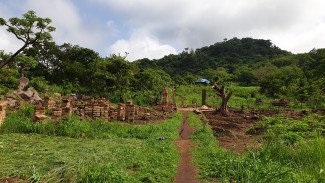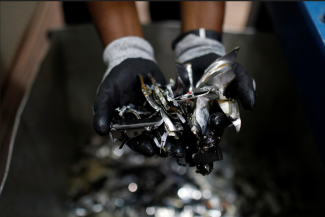- Integration into one or more value chains could enable LDCs to specialize in certain production activities or modules while gradually evolving towards more complex tasks.
- This nevertheless requires the introduction of coherent agricultural, industrial and trade policies to avoid certain risks inherent to global value chain integration.
- To avoid such risks, one alternative is to invest in the development of regional value chains.
The debate concerning the participation of least developed countries (LDCs) in global value chains is not new and has come to the fore on many occasions since the category was created by the United Nations in the early 1970s. In becoming the focus of renewed interest, the debate helps raise awareness of the need to speed up the industrialization and structural transformation of LDCs so as to create conditions for sustainable and inclusive development.
Understanding LDC marginalization mechanisms
LDCs face a variety of challenges. Apart from a few rare and often unstable and reversible economic successes, LDCs, and especially those in Africa, which represent over 80% of the group's members, have not properly benefitted from the expansion of the global economy and international trade seen in recent decades. Some have even become relatively deindustrialized, despite increased access to imported intermediate products, particularly those destined for the manufacturing sector. LDCs continue to integrate into global value chains mainly by exporting unprocessed products and intermediate products that are raw material‑intensive. However, this route is too long and too complex, and, to make matters worse, is controlled from end to end by multinational firms that are reluctant to consider a change of course.
In many sectors, it is clear that large foreign firms control both the production and marketing of goods. Their production fragmentation strategies enable these transnational corporations to position themselves at the most lucrative points of the chain, leaving very little room for local enterprises and producers. In the agricultural sector, where many African LDCs have considerable assets, numerous subsectors are structured in such a way that products leave the country immediately after they have been harvested, without undergoing any form of processing or after only a minimum amount of processing. Such products include rubber from Liberia; cotton from Burkina Faso, Benin, Mali and Chad; and cashew nuts from Guinea‑Bissau, Senegal and Mozambique.
In some cases, LDC constraints stem not only from the strategies adopted by multinational firms, but also from governance issues; weak institutional, technical and technological capacity; and other challenges such as the shortage or complete absence of skilled labour and logistical difficulties.
Taking advantage of global value chain opportunities
The fragmentation of production chains at the global level has created new opportunities for LDCs. Not only are they able to increase their level of participation in certain global value chains, they can also diversify both their export markets and their trading partners. LDCs find themselves in a wide range of economic situations. While some are lagging behind in terms of value chain integration because of factors such as their size, geographical location or supply‑side constraints, others are gradually managing to establish a niche in cross‑border chains, even if their participation is limited to the start of the chain and particularly to the supply of unprocessed or semi‑processed products.
LDC participation in global value chains could provide these countries with a whole range of benefits. In view of the weakness of their capacities and low technical and technological levels, integration into one or more chains may in fact enable them to bypass the complexity of developing an entire industrial subsector, by specializing in certain production activities and progressively moving towards more complex tasks. This, however, requires the introduction of coherent agricultural, industrial and trade policies that will eliminate certain risks inherent to global value chain integration, particularly the risk of remaining stuck in an "enclave" specialization permanently or in the long term. To avoid this risk, one alternative is to invest in the development of regional value chains.
Using regional value chains
Over time, it has been observed and experience has shown that the development of regional value chains and the greater integration of production, processing and distribution systems within a single region increase the potential for integration into global value chains. While not a prerequisite, integration into regional value chains gives LDCs room to learn and experiment. The benefits of this are twofold: it provides an opportunity to foster and draw on the complementarities between countries and economic stakeholders in one region, while exploiting the growing demand for finished products in each region.
In West Africa, for instance, efforts made to progressively develop value chains have borne fruit in many areas. This is particularly so in the agricultural and agri‑food sector, thanks to the emergence of an urban middle class that has increased consumer demand for high‑quality food products. While the growing consumer demand for food products is currently reflected in increased imports of foreign products, one can assume that a country's consumers have a culturally marked preference for local products provided that they meet quality and safety requirements. This means that in the short or medium term, this sector could be one of the main sources of wealth creation and one of the principal generators of employment.
What role should the WTO play?
The commitments undertaken by World Trade Organization (WTO) Members in favour of LDCs at the Ministerial Conference in Nairobi in 2015 provide real opportunities to remove all or some of the constraints experienced by LDCs in terms of production capacities and value chain development. Two of these commitments are specifically linked to opportunities for value chain development. They are (i) the implementation of preferential treatment in favour of services and service suppliers of LDCs and the increased participation of LDCs in trade in services (GATS); and (ii) preferential rules of origin for LDCs. The Decision on preferential rules of origin for LDCs specifically asks preference‑granting Members to allow the use of non‑originating materials up to 75% of the final value of the product. This is a big step forward.
Of course, the WTO has neither the means nor the vocation to do the work of LDCs for them. As noted in the Istanbul Declaration and Programme of Action for LDCs adopted in 2011, LDCs themselves have the responsibility to formulate and execute development policies and strategies that are consistent with their own vision and objectives. What WTO Members can do, however, is ensure that decisions taken in favour of LDCs are effective, and improve and reinforce the effectiveness of initiatives such as the Enhanced Integrated Framework and Aid for Trade. More importantly, developed countries must be encouraged to refrain from imposing bilateral trade agreements on African LDCs that oblige them to open up their markets on a broad scale without being able to benefit from their partner's market because of their limited production capacities.
How can these constraints be removed?
The constraints faced by LDCs are not insurmountable. They can be removed through strong political will and through transformational leadership capable of formulating effective and coherent policies that promote the systematic processing and adding of value to local products to meet the needs of domestic, regional and continental markets. Considerable investment in human resources, infrastructure and the supply chain is needed to achieve this. Appropriate regulatory measures are also needed to facilitate cross‑border trade and to ensure the free movement of products.
In this light, the creation of national and regional industrial champions, particularly in the area of agri‑food processing, would appear to be a prerequisite.
-------
Dr Cheikh Tidiane Dieye is the Executive Director of the African Centre for Trade, Integration and Development (CACID).
If you would like to reuse any material published here, please let us know by sending an email to EIF Communications: eifcommunications@wto.org.



